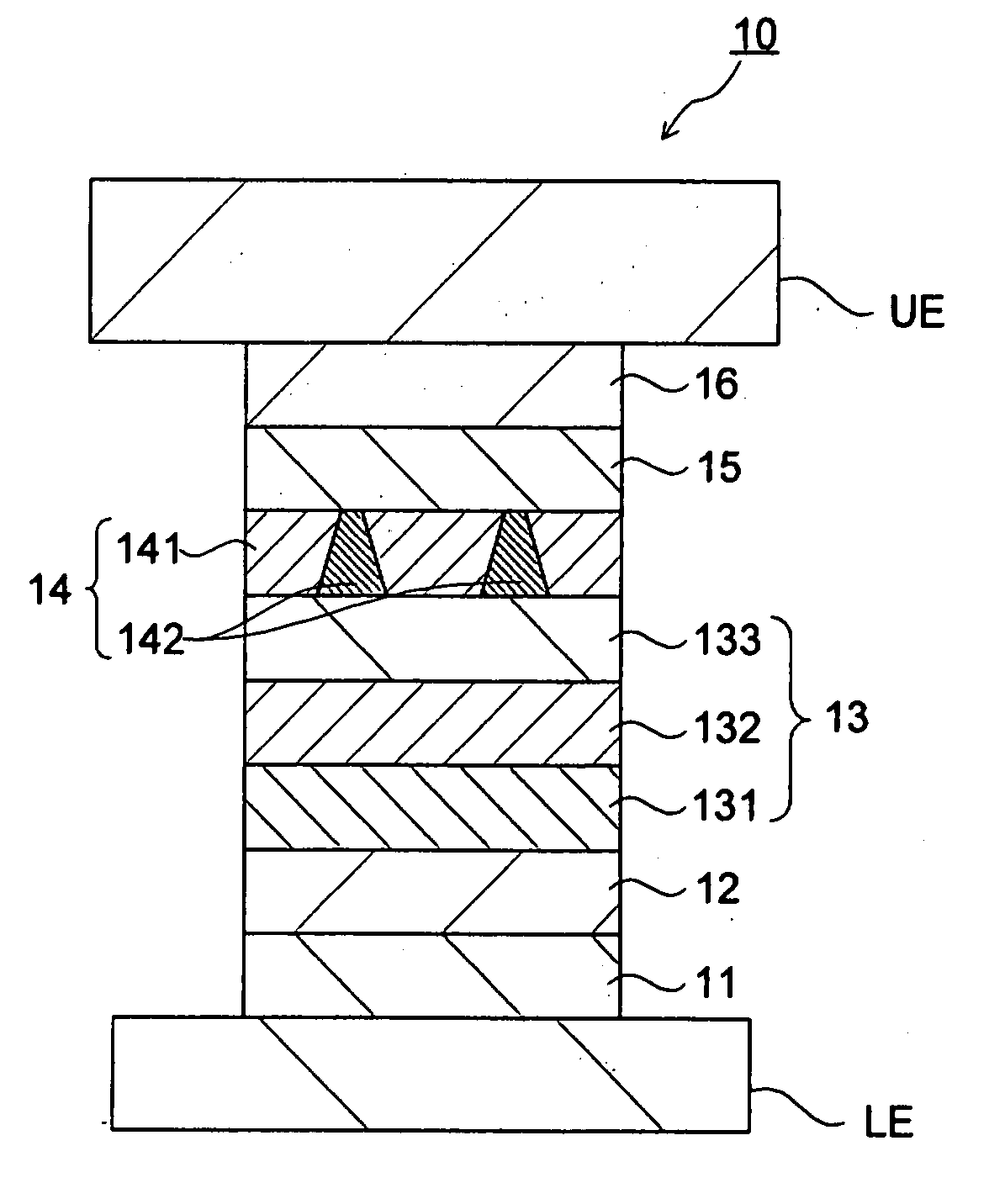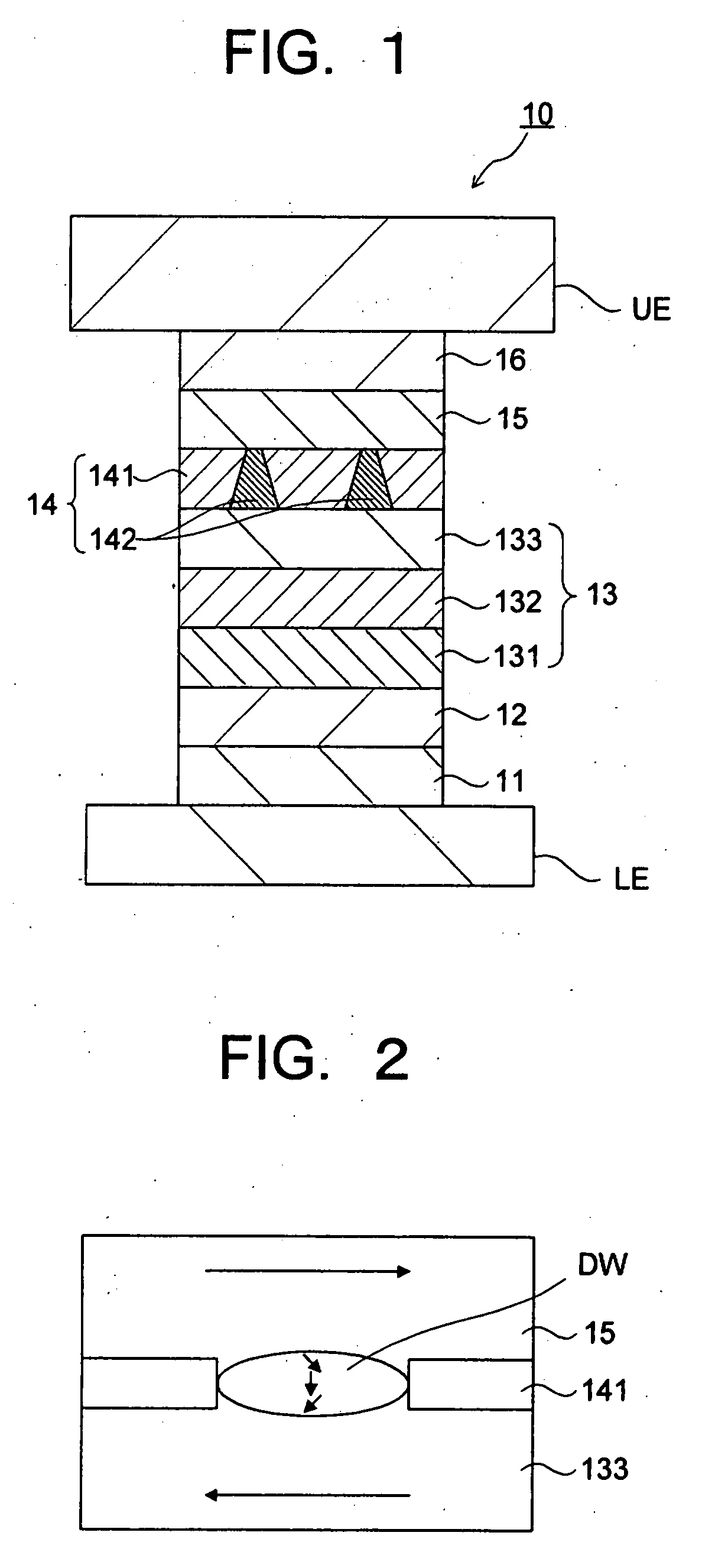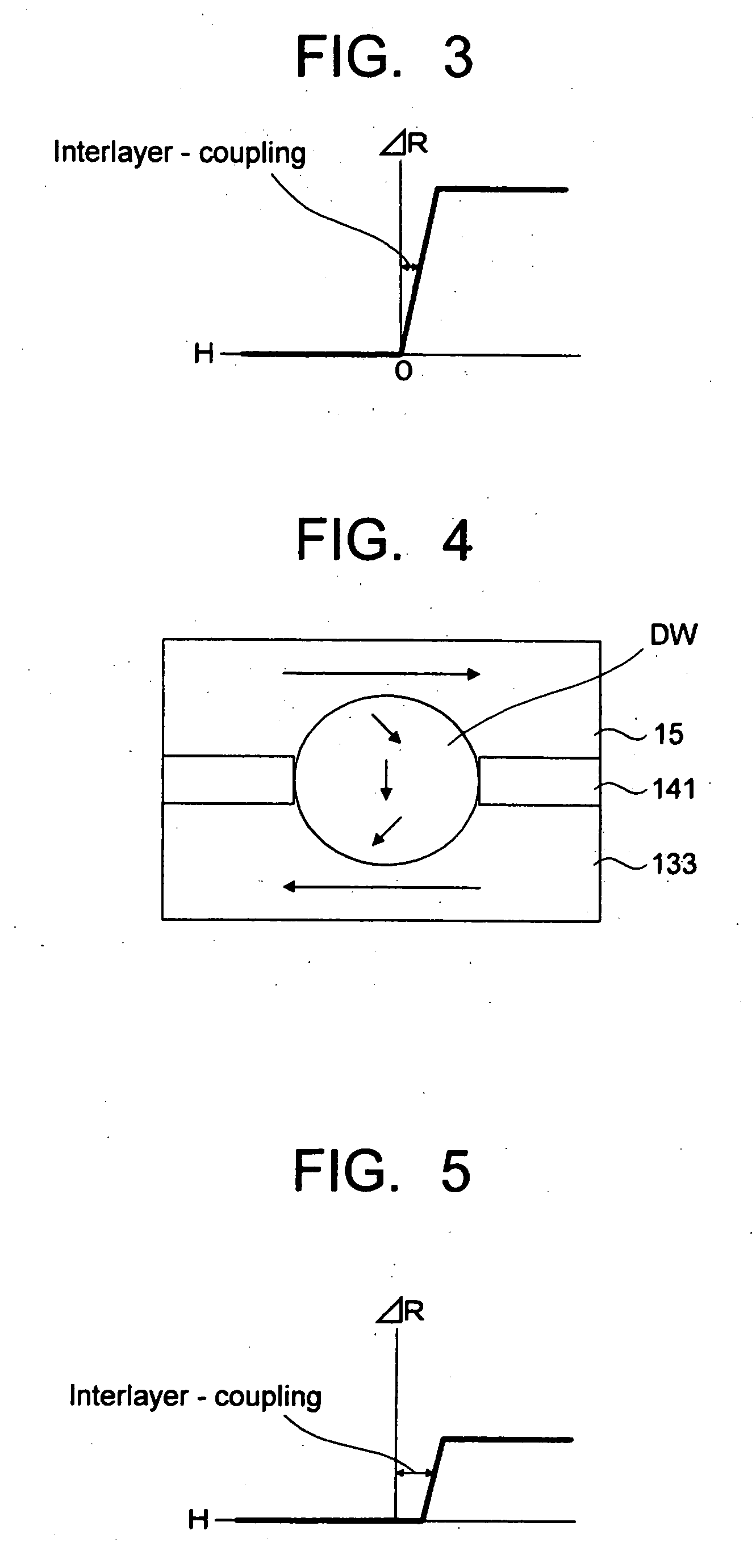Magneto-resistance effect element, magnetic head, magnetic recording/reproducing device and magnetic memory
a technology of resistance effect and magnetic head, which is applied in the direction of magnetic body, record information storage, instruments, etc., can solve the problem of excessive resistan
- Summary
- Abstract
- Description
- Claims
- Application Information
AI Technical Summary
Benefits of technology
Problems solved by technology
Method used
Image
Examples
example 1
[0084]Example 1 relating to the magneto-resistance effect element 10 will be described. In Example 1, the magneto-resistance effect element 10 was formed as follows:[0085]Underlayer 11: Ta 5 nm / NiFeCr 7 nm[0086]Antiferromagnetic layer 12: PtMn 15 nm[0087]First pinned layer 131: Co9Fe1 3.3 nm[0088]Magnetic antiparallel coupling layer 132: Ru 0.9 nm[0089]Second pinned layer 132: Fe5Co5 2.5 nm / Cu 0.1 nm
[0090]The underlayer 11 through the second pinned layer 132 were subsequently formed. Then, the Al layer with a thickness of 0.9 nm was formed and oxidized under Ar ion atmosphere. Then, the ion treatment was carried out to form the multilayered structure of the intermediate layer 14: the Al oxide / FeCo—Cu metallic layer. Then,[0091]Free layer 15: Fe5Co5 2.5 nm[0092]Protective layer 16: Cu 1 nm / Ta 2 nm / Ru 15 nm
were formed.
[0093]The thus obtained magneto-resistance effect element 10 was thermally treated at 270° C. during ten hours under magnetic field. As a result, in Example 1, the RA of...
example 2
[0094]Example 2 relating to the magneto-resistance effect element 10 will be described. In Example 2, the magneto-resistance effect element 10 was formed as follows:[0095]Underlayer 11: Ta 5 nm / Ru 2 nm[0096]Antiferromagnetic layer 12: PtMn 15 nm[0097]First pinned layer 131: Co9Fe1 3.3 nm[0098]Magnetic antiparallel coupling layer 132: Ru 0.9 nm[0099]Second pinned layer 132: Fe5Co5 2.5 nm / Cu 0.1 nm
[0100]The underlayer 11 through the second pinned layer 132 were subsequently formed. Then, the Al layer with a thickness of 0.9 nm was formed and oxidized under Ar ion atmosphere. Then, the ion treatment was carried out to form the multilayered structure of the intermediate layer 14: the Al oxide / FeCo—Cu metallic layer. Then,[0101]Free layer 15: Fe5Co5 2.5 nm[0102]Protective layer 16: Cu 1 nm / Ta 2 nm / Ru 15 nm
were formed.
[0103]The thus obtained magneto-resistance effect element 10 was thermally treated at 270° C. during ten hours under magnetic field. As a result, in Example 2, the RA of the...
example 3
[0104]Example 3 relating to the magneto-resistance effect element 10 will be described. In Example 3, the magneto-resistance effect element 10 was formed as follows:[0105]Underlayer 11: Ta 5 nm / NiFeCr 7 nm[0106]Antiferromagnetic layer 12: PtMn 15 nm[0107]First pinned layer 131: Co9Fe1 3.3 nm[0108]Magnetic antiparallel coupling layer 132: Ru 0.9 nm[0109]Second pinned layer 132: Fe5Co5 2.5 nm / Zr 0.1 nm
[0110]The underlayer 11 through the second pinned layer 132 were subsequently formed. Then, the Al layer with a thickness of 0.9 nm was formed and oxidized under Ar ion atmosphere. Then, the ion treatment was carried out to form the multilayered structure of the intermediate layer 14: the Al oxide / FeCo—Zr metallic layer. Then,[0111]Free layer 15: Fe5Co5 2.5 nm[0112]Protective layer 16: Cu 1 nm / Ta 2 nm / Ru 15 nm
were formed.
[0113]The thus obtained magneto-resistance effect element 10 was thermally treated at 270° C. during ten hours under magnetic field. As a result, in Example 3, the RA of...
PUM
 Login to View More
Login to View More Abstract
Description
Claims
Application Information
 Login to View More
Login to View More - R&D
- Intellectual Property
- Life Sciences
- Materials
- Tech Scout
- Unparalleled Data Quality
- Higher Quality Content
- 60% Fewer Hallucinations
Browse by: Latest US Patents, China's latest patents, Technical Efficacy Thesaurus, Application Domain, Technology Topic, Popular Technical Reports.
© 2025 PatSnap. All rights reserved.Legal|Privacy policy|Modern Slavery Act Transparency Statement|Sitemap|About US| Contact US: help@patsnap.com



